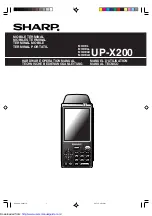
Appendix D
Page 273
Appendix D
Non-ASCII Characters
for Login Scripts
The following information enables you to create custom login scripts
that require non-ASCII characters. It is provided for advanced users
who understand the use and requirements of such characters in a
custom login script.
Use of ^char
You may use the caret ( ^ ) to transmit ASCII command characters. If
you send ^
char
, and the ASCII value of
char
is between @ and _, then
the character is automatically translated to a single-byte value
between 0 and 31.
For example, ^M is converted to a carriage return. If char is a value
between a and z, then the character sequence is translated to a single-
byte value between 1 and 26. If char is any other value, then the
character sequence is not subject to any special processing.
For example, the string “Joe^M” transmits Joe, followed by a carriage
return.
Carriage return and line feed
You may include carriage return and line feed commands as part of
the login script, when entered in the following format:
<cr>
Sends or receives a carriage return
<lf>
Sends or receives a line feed
For example, the string “waitfor Joe<cr><lf>” waits to receive Joe
followed by a carriage return and line feed from the remote computer
before executing the next command in the script.
Summary of Contents for Visor
Page 1: ...Visor Handheld User Guide Windows Edition ...
Page 10: ...Page 10 ...
Page 34: ...Page 34 Introduction to Your Visor Handheld ...
Page 68: ...Page 68 Overview of Basic Applications ...
Page 164: ...Page 164 Application Specific Tasks ...
Page 240: ...Page 240 Setting Preferences for Your Handheld ...
Page 246: ...Page 246 Maintaining Your Handheld ...
Page 260: ...Page 260 Troubleshooting Tips ...








































